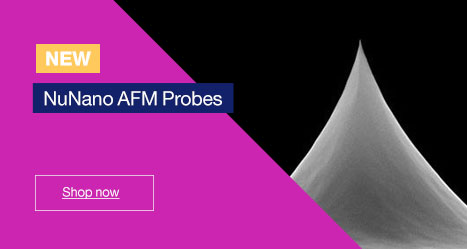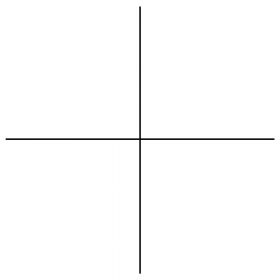How often have you been scanning a new batch of slides and found an area of interest which you wish to show to a colleague or come back to at a later date? Marking the slide or the coverslip with a marker or an engraver is impractical as this could easily crack the coverslip, or obscure the area of interest under a blob of ink.
This is where the ‘Finder Slides’ are invaluable accessories. These slides have a grid pattern of co-ordinates usually over the entire surface of the slide. They are not overlaid on top of the specimen slide, instead, the area of interest is found on a slide which is then carefully removed without disturbing the XY stage controls and replaced with a finder slide. Looking back down through the eyepieces, you will then see co-ordinates which relate to the area of interest.
Maltwood’s Finder (1858)
One of the earliest examples of a finder slide was the ‘Maltwood’s Finder’. This finder slide was invented by Thomas Maltwood (1827-1921), a fellow of the Royal Microscopical Society. These early finder slides were manufactured by Smith, Beck & Beck of London. James Smith started making microscopes in 1839 and went into partnership with Richard Beck on 1847. Four years later, Richards’s brother Joseph joined the firm. Smith, Beck & Beck started making the Maltwood’s Finder slides in 1858.
Maltwood initially drew the grid on a sheet of paper measuring 10 inches square which was photographed to give a negative measuring one inch square. A positive microphotographic plate was printed from this original negative and hand-mounted on a slide measuring 3” x 1 ¼”. On this plate the lines were only 1/50th of an inch apart with a total of 2,500 co-ordinate squares. These glass slides were hand engraved with the manufacturer names and each one was numbered.
Webb’s Finder (1880)
William Webb (1815-1888) is well known amongst antique microscopy enthusiasts for his microscopic writings etched onto glass slides. Webb had constructed a micro-engraving machine which reduced his hand movements to incredibly small scales, but the details of the machine are lost and it is thought that he destroyed it shortly before his death. Amongst the many curious slides which he made were epigrams measuring only 1/5000th of an inch and the entire Lord’s Prayer etched into glass and measuring 1/500th of a square inch. He proposed that these slides were “the best, the most simple, and unerring tests for objectives”. In 1880 he put his micro-engraving machine to more practical use and he produced finder slides and he boasted that these were of greater accuracy that the Maltwood’s Finder slides in that the Webb’s Finder contained 16 squares in the space of one square of a Maltwood’s Finder.
Gage Finder/Marker (1895)
Simon Henry Gage (1851-1944) was an American microscopist and Professor of anatomy, embryology and histology at Cornell University. In 1895, he published a paper in the Proceedings of the American Microscopical Society and he describes the problems of finding exact points on a specimen slide; “in one’s private study or for exhibition to friends, the special point that is on a slide is often the last to be found, much to one’s discomfiture.” This device differed from the classic finder slides as it actually marked the coverslip surface with a delicate brush filled with “colored shellac or other varnish”. This apparatus replaced one of the objectives and when an area of interest was found, the apparatus was swung into position and the marker turned to make a circle around the area of interest.
The England Finder
Today, one of the most common finder slides is ‘The England Finder’ which is available from Agar Scientific;
https://www.agarscientific.com/the-england-finder
The England Finder is not named after the country, but after its inventor, Charles Norman England. He devised the original layout of the finder over 50 years ago and working with a company which was called ‘Graticules Ltd.’, they created a photomask layout as a freehand plot. Graticules Ltd. later became ‘Psyer-SGI Ltd.’ but the mastering of each of these slides is still derived from the original freehand plot which not only makes each Finder slide identical, but also a very unique product which cannot be reproduced by modern methods.
In a letter dated 1959 to the New Scientist from the Quekett Microscopical Club, Graticules Ltd. were described (in relation to the Maltwood’s Finder) as having “performed a public service in reintroducing an accessory of considerable usefulness in microscopy.”
The England Finder has a vacuum-deposited chromium grid which covers the entire slide surface and is particularly suited for lower-power magnification work. Finder slides mean that the microscopist can record the co-ordinates of any area of interest on a microscope slide which can then easily be found at a later date or by a colleague using the same (or a similar microscope). The England Finder can be used on any microscope with an X-Y stage movement of 75 mm by 25 mm. The grids line are situated at 1 mm intervals- along the X axis, the grids are labelled 1 to 75, whilst the Y axis grid lines are labelled A to Z (excluding ‘I’ to avoid confusion with the number ‘1’);
This gives a total of 1875 positions across the whole slide. In addition, each co-ordinate is divided into five (central circle and four quartiles) for even greater positioning accuracy (there are 9045 locations on each slide).
When using a finder slide, it is also useful to have a cross-hair graticule placed in one of the eyepieces of the microscope for even greater accuracy. Selections of such graticules are available from Agar Scientific;
https://www.agarscientific.com/eyepiece-graticules-e-f
To use the England Finder;
- Firstly mark the slide orientation (X/Y) on the label or frosted section of the specimen slide. Make sure that the microscope stage is referenced to its maximum X and Y stop positions.
- Locate the centre of the area of interest under the cross-hairs of the graticule.
- Being careful not to move the position of the microscope stage, carefully remove the specimen slide and replace with the England Finder making sure the X/Y orientation is the same as the specimen slide.
- Bring the England Finder grid into focus and make a note of the numbers and letters which are under the cross-hairs. Record the letter and numbers of the main circle followed by the number of the quartile (if the exact spot falls into one of these sections). For example, ‘U39/1’. If the point of interest lies in the centre of one of the circles, then this should be recorded as ‘0’.
- To find an area of interest from a co-ordinate, ensure the stage is correctly referenced to X and Y, place the England Finder on the stage and locate the co-ordinate, then carefully replace the finder slide with the specimen slide. The area of interest should now be in the centre of the field of view.
AUTHOR: Martin Wilson



